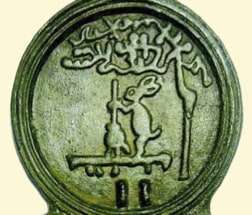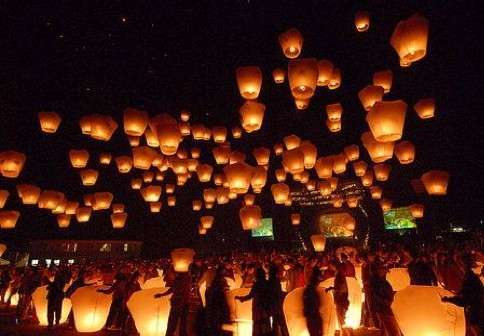November 27th, 2013

I am always curious about the traditional rituals celebrated by other cultures and set out exploring. On this Thanksgiving, I’d like to share with you five examples of rituals used to mark the passage of time, celebrate life, and give thanks for the harvest that sustains them.
1. Nuts to you!
When my son was little we had a yearly ritual of visiting a friend’s neighborhood to see the “nuts-guy” on Halloween. Instead of offering candy when he opened the door, he would scoop a large handful of nuts (in their shells) from a large bowl just inside the doorway and throw them at us shouting “Nuts to you!” and slam the door. We loved it! It always sent us into spasms of laughter because it was so weird, and unlike our expectations of a traditional Trick-or-Treat experience.
Over the years, I have periodically wondered what ever became of the nuts-guy and why in the world he would do that. While doing some reading about the traditions of giving thanks in cultures around the world, I came across an interesting ritual in observance of St. Martin’s Day, celebrated in Malta. On the Sunday nearest to November 11, the Maltese hand out bags of nuts of various kinds, (and sweets) to children celebrating St. Martin’s Day, known as Il-Borża ta’ San Martin, “St Martin’s Bag.” Mystery solved, the nuts-guy was a cranky guy from Malta.

The feast of St. Martin is traditionally celebrated on November 11, and had its beginning in France, later spreading to Germany, Scandinavia and Eastern Europe. St. Martin was known as a friend of children and a patron of the poor, and the feast coincides with celebrations to mark the beginning of harvest. So what if the nuts-guy was a little early.
2. Children’s Festival of Lanterns
Another mystery was solved last week in this very same vein of questioning, as I encountered my very first “Children’s Festival of Lanterns” here in Germany called Martinsfeuer.

Children from all over the area swarmed into the center of the city all carrying paper lanterns and of course, wearing a few glow-in-the-dark articles of clothing. The children walk in processions carrying lanterns, which they made in school, often painted with the face of the sun, and sing Martin Songs.
The trams stopped running their usual routes to accommodate the masses of illuminated little beings, wrapped up in winter gear, eagerly anticipating a huge bonfire in the central marketplace at the end of the evening.
As our tram crawled along at a snails’ pace I looked out the window and asked my husband ‘What’s that all about?’ He only knew that he had done that as a child and that it was a very old tradition that happens every year at this time. I, on the other hand, needed to know.
Martinmas is the beginning of winter and is celebrated at harvest time, and in the wine producing regions it is the time when the newly produced wine is ready for drinking. It is also a time marking the end of winter preparations, and includes the bounty of the harvest. The feast is very closely related to the American and Canadian ritual of Thanksgiving.
American Thanksgiving, celebrated on the fourth Thursday of October, also had its roots in religious traditions, and like Martinmas, is celebrated in a secular manner as well. It sprung out of the English Reformation as a rebellion against the large number of Catholic religious holidays. The Puritans wanted religious holidays to be replaced by either Days of Fasting or Days of Thanksgiving. In1621, the Puritan emigrants to the New World brought these special day designations with them, and celebrated their first successful bounty at the end of the harvest season.
The French did the same in Canada in the early 17th century and brought their wonderful Joie-de-Vivre imperative along and continued to celebrate throughout the winter, sharing their food with the Native people in the area. Vive la France!
3. Jade Rabbit
In China and Vietnam the harvest festival is celebrated during a full moon in late September or early October, close to the autumnal equinox. It is a traditional time for family and relatives to come together and celebrate harmonious unions, to give thanks for a bountiful harvest and pray for a good future.
Food offerings were traditionally made in honor of the moon, and today people come together outdoors watch the moon, sometimes reflected in a teacup, as a symbol of harmony and unity.
An integral part of the moon ceremony alongside tea, is the Mooncake. The making and sharing of Mooncakes–– considered a delicacy, is an important aspect of the ritual and symbolizes the completeness and unity of the family. Mooncakes are traditionally round, about 10cm in diameter and 4-5cm thick, and filled with a rich mixture of red bean or lotus seed paste, encased in a thin crust.
Moon worship at the time of harvest is directly connected to the eternal sustenance of life and honors the deity Chang’e, a goddess who drank the elixir of immortality, and flew into the sky, transforming into the moon. http://en.wikipedia.org/wiki/Chang%27e_%28mythology%29
In Chinese folklore the rabbit, often referred to as Jade Rabbit is portrayed as the eternal companion of Chan’e on the moon, where he is constantly pounding the elixir of life for her in a mortar and pestle. In the poetry of the Han Dynasty, Jade Rabbit was often used in place of the word for moon.

In both China and Vietnam, illuminated lanterns have become the symbol of the harvest moon festival, and In Vietnam, children parade with colored lanterns, signifying the wish for the warmth of the sunlight to return after the colder, darker days of winter.

4. Light Trumps Dark
Another luminous goddess of light dating back to the Zoroastrian religion of ancient Persia, today’s Iran, is honored in Iran, during their harvest celebration of “thanksgiving.” The ancient Iranian festival of Mehregan, which dates before the earliest Aryans (Iranians), is still celebrated on October 2, and signifies the time of harvest and the beginning of winter.

As in most cultures around the world it is joyously celebrated with family and friends, coming together and illuminating the coming darkness of the winter months. The Iranian festival, as in Europe and Asia, traditionally culminates with bonfires and fireworks.
These “illuminations” draw their symbolism from the ancient Goddess of Light, Mithra or Mehr, who is believed to have defeated evil and triumphed over darkness. It is also a time to reflect on the eternal, regenerative spirit of the birth and rebirth cycles represented by harvesting what has has been sown.
A table is set with reverence to this sacred life-sustaining occasion, which includes; rosewater, sweets flowers, an incense burner filled with frankincense and Espand, as well as a dish of water scented with marjoram extract, and lotus seeds. The table is set with a variety of foods: apples, almonds, pomegranates, pistachios, vegetables, sweets, and flowers.
At lunchtime several rituals are observed such as throwing handfuls of lotus, sugar, plum seeds and marjoram over participants’ heads, while they embrace, and in the evening fireworks are set off and prayers are recited to receive divine blessings.
5.Thai Pongal
In South India, one of the most important festivals for the Tamils is Thai Pongal, celebrated at the end of the harvest season. Throughout India it coincides with Makara Sankranthi, the celebration of the winter harvest usually held from January 13-16.

Pongal is also the name of a rice dish, boiled with lentils and milk to signify the warming (boiling) of the season as the sun travels north towards the equinox. It is a traditional offering of gratitude to the Sun God, Surya, for a bountiful harvest. In the North of India, millions of people immerse themselves in rivers and make offerings to Surya in the form of thousands of colorful kites.
Children also participate in these rituals of thanksgiving as fruits of the harvest are collected and mixed together with flowers in a ceremony called Bhogi Pallu. Money is sometimes placed into this mixture and poured over the children who are then encouraged to collect the sweet fruit and money.
In India, the sun stands for the supreme force of life, the manifest God, Pratyaksha Brahman, who is endlessly returning to bless and sustain life.
In India, the harvest is a time to give thanks and recognition to the animal kingdom as well. Cows are thanked in a ritual called Maatu Pongal, where they are decorated with garlands of flowers, and fed special food, prepared in gratitude for their help in farming.
Cows are not the only lucky ones. Women cook and create offerings to birds in the ritual known as Kanu Pidi. They feed the birds and pray for the well being of their brothers, by placing a selection of colored rice dishes cooked with vegetables and bananas outside, and inviting the crows to descend, in the hope that brother-sister ties will remain forever strong like a family of crows.
May your harvests be bountiful, and perhaps in light of the recent terrible devastation, loss of life and the havoc created by Global Climate disasters, being thankful, and not abusive of Mother Earth, our supreme goddess, might be the best ritual of all. For a thought-provoking essay, check out:

Jeannie Winston Nogai
Owner / Winston Nogai Design
www.jeanniewinston.com / E: [email protected]


